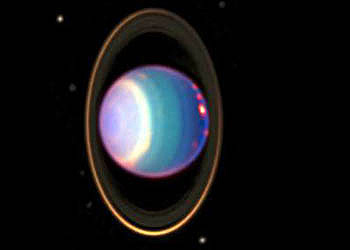

|
Документ взят из кэша поисковой машины. Адрес
оригинального документа
: http://www.stsci.edu/~inr/thisweek1/thisweek156.html
Дата изменения: Fri Jun 8 23:36:03 2007 Дата индексирования: Tue Oct 2 14:05:53 2012 Кодировка: Поисковые слова: galaxy cluster |


| Program Number | Principal Investigator | Program Title | Links |
| 10335 | Holland Ford, The Johns Hopkins University | Black Holes in Globular Clusters | Abstract |
| 10496 | Saul Perlmutter, Lawrence Berkeley National Laboratory | Decelerating and Dustfree: Efficient Dark Energy Studies with Supernovae and Clusters | Abstract |
| 10512 | William Merline, Southwest Research Institute | Search for Binaries Among Faint Jupiter Trojan Asteroids | Abstract |
| 10514 | Keith Noll, Space Telescope Science Institute | Kuiper Belt Binaries: Probes of Early Solar System Evolution | Abstract |
| 10525 | Suzanne Hawley, University of Washington | Characterizing the Near-UV Environment of M Dwarfs: Implications for Extrasolar Planetary Searches and Astrobiology | Abstract |
| 10527 | Dean Hines, Space Science Institute | Imaging Scattered Light from Debris Disks Discovered by the Spitzer Space Telescope Around 20 Sun-like Stars | Abstract |
| 10532 | Kai Noeske, University of California - Santa Cruz | Kinematics and morphology of the most massive field disk galaxies at z>1 | Abstract |
| 10534 | Kathy Rages, SETI Institute | Active Atmospheres on Uranus and Neptune | Abstract |
| 10536 | Raghvendra Sahai, Jet Propulsion Laboratory | What Are Stalled Preplanetary Nebulae? An ACS SNAPshot Survey | Abstract |
| 10538 | Glenn Schneider, University of Arizona | Near-IR Spectrophotometry of 2MASSWJ 1207334-393254B - A Planetary Mass Companion to a Young Brown Dwarf | Abstract |
| 10550 | Markus Kissler-Patig, European Southern Observatory - Germany | The Nature of LSB galaxies revealed by their Globular Clusters | Abstract |
| 10551 | Shri Kulkarni, California Institute of Technology | Gamma-Ray Bursts from Start to Finish: A Legacy Approach | Abstract |
| 10555 | Scott Sheppard, Carnegie Institution of Washington | A Search for Satellites Around Kuiper Belt Objects Which Exhibit High Angular Momentum | Abstract |
| 10556 | David Turnshek, University of Pittsburgh | Neutral Gas at Redshift z=0.5 | Abstract |
| 10565 | Silvia Galleti, INAF, Osservatorio Astronomico di Bologna | The outermost globular cluster of M31 | Abstract |
| 10573 | Mario Mateo, University of Michigan | Globular Clusters in the Direction of the Inner Galaxy | Abstract |
| 10588 | Michael Brotherton, University of Wyoming | The Host Galaxies of Post-Starburst Quasars | Abstract |
| 10592 | Aaron Evans, State University of New York at Stony Brook | An ACS Survey of a Complete Sample of Luminous Infrared Galaxies in the Local Universe | Abstract |
| 10602 | Jesus Maiz-Apellaniz, Space Telescope Science Institute - ESA | Complete Multiplicity Survey of Galactic O2/O3/O3.5 Stars with ACS | Abstract |
| 10606 | Bill Sparks, Space Telescope Science Institute | Ultraviolet Snapshots of 3CR Radio Galaxies | Abstract |
| 10611 | George Benedict, University of Texas at Austin | Precise Distances to Nearby Planetary Nebulae | Abstract |
| 10626 | Yeong-Shang Loh, University of Colorado at Boulder | A Snapshot Survey of Brightest Cluster Galaxies and Strong Lensing to z = 0.9 | Abstract |
| 10631 | Thomas Puzia, Space Telescope Science Institute | Intermediate-Age Globular Clusters in M31 | Abstract |
| 10635 | Bodo Ziegler, Georg-August-Universitat | Galaxy Transformation as probed by Morphology and Velocity Fields of Distant Cluster Galaxies | Abstract |
| 10764 | Carol Grady, Eureka Scientific Inc. | X-Ray Activity and Winds in Young A Stars at the Epoch of Disk Clearing | Abstract |
GO 10496: Decelerating and Dustfree: Efficient Dark Energy Studies with Supernovae and Clusters
GO 10606: Multicolour snapshot observations of 3C Radio Galaxies
GO 10525: Characterizing the Near-UV Environment of M Dwarfs: Implications for Extrasolar Planetary Searches and Astrobiology
GO 10534 Active Atmospheres on Uranus and Neptune
 Nicmos image of aurorae on Uranus
Nicmos image of aurorae on Uranus
|
The atmospheres of the gas giant planets in the solar system are dynamic entities that can exhibit dramatic changes over a variety of timescales. Those changes are most apparent in Jovian atmosphere, which displays a wide variety of bands and spots, reflecting complex meteorological phenomena (see, e.g., previous ACS observations of the upper atmosphere and of the new little red spot ). This is not surprising since Jupiter atmosphere receives the highest input of solar energy. However, secular variations are also evident in the atmospheres of the outer planets, albeit usually at a more subtle level. The present program aims to monitor atmospheric changes in the two outermost gas giants, Uranus and Neptune. Both exhibit long-term seasonal variations, whose origins are not yet well understood; both are capable of generating dark spots - phenomena that are presumably related to Jupiter's Great Red Spot and Saturn's Great White Spot. The present observations use a variety of filters on ACS and WFPC2 (notably the 619 nm methane filter) to probe conditions are a variety of levels within the planetary atmospheres. |
GO 10626: A Snapshot Survey of Brightest Cluster Galaxies and Strong Lensing to z = 0.9